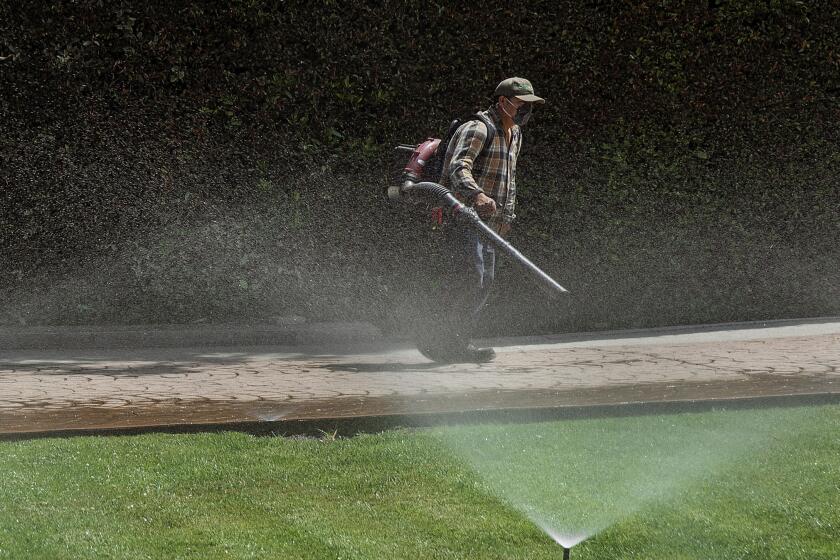A Hillside Landscape That Glistens With Silvery Tints
- Share via
It requires a brave designer, and an equally bold client, to use this much gray foliage in a garden. But in the sun-soaked hills above Santa Barbara, landscape architect Isabelle Greene made it work--wonderfully. Shades of gray carry the eye far into the distance, toward a silvery sea and a misty gray horizon, with no end in sight. Silver turns to ashen gray, rebounds in a pearly gray, bounces off the gray-green of shrubs to either side, then back to the blue-gray of gazanias and a distant acacia before it all dissolves in the faraway sparkle off back-lit waves.
That much gray might seem less comfortable in a garden not surrounded by native California plants, as this one is. Gray foliage, after all, is not uncommon in the chaparral, and some of these gray plants--such as the sage pictured at left--are natives. The steely gray foliage of St. Catherine’s lace ( Eriogonum giganteum ) is native to the islands just offshore. The incredibly silvery Senecio leucostachys (foreground, far left) is a rare dusty miller from Argentina (and Turk Hessellund Nursery in Santa Barbara). The English lavender (lower left) is an elegant gray-green. Snow-in-summer (below, center) and gazanias are the carpeting gray plants--the hollows between the hills of silver.
The tricky transition from a well-watered lawn near the house to the gray-foliaged plants, which do quite well without water (as most do), is softened by grassy tufts of agapanthus and the rounded forms of native rock. (The round blue sculpture atop one boulder, below, is the focus for the garden.) Braver still would be a gray garden with not a single green blade of grass in sight--a completely Mediterranean composition--but how difficult it would be to do without the comfort of such a lawn underfoot!






